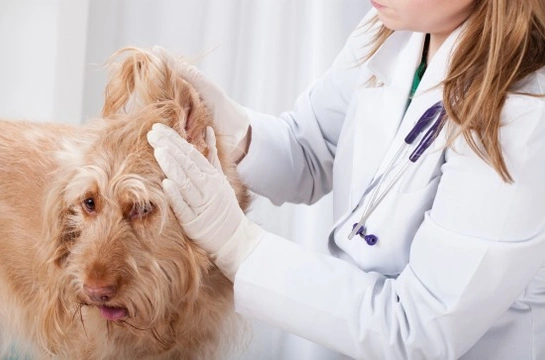
Share:
7 Tips to Help Dogs with Ear Problems
- There are many possible reasons for dirty ears. Some cases may require veterinary intervention, whilst others are less severe and may be resolved with an appropriate cleaning regime. It is always important to identify the cause / s and to seek veterinary advice in the first instance since untreated infections can quickly get worse and may cause damage to the ear drum which can be permanent and impair your dog’s hearing. Ear problems can be aggravating in the least and extremely sore in some cases, which is another reason why it’s so important to book an examination. It’s imperative that your vet establish whether the ear drum is intact or damaged before the treatment protocol is decided.
- Some dogs are not very keen on having their ears examined, and a wriggly dog can injure himself when you or your vet are trying to look into them. It is sensible to get your dog accustomed to having his ears inspected and cleaned when there is not a problem, so that he is used to this and will sit still throughout the procedure. You may not be able to see as far into the ear as the vet will with his special diagnostic device (called an otoscope), but you can at least check for waxy debris. If there are excessive hairs inside the ear, plucking them may be beneficial but this is a job only for a vet or experienced and properly qualified groomer.
- Few dogs like having ear medications administered, so if this is required, it’s a very good idea to have a helper on hand to calm your dog and gently but securely restrain him whilst you apply the medication. Small dogs may be better examined on a table (with a non-slip surface), whilst larger dogs are often happier on the floor.
- Ear infections can be secondary to allergies. The ears are a favourite site for yeast and bacterial proliferation since they are dark, moist and warm – all conditions that they find highly favourable. When the immune system is depressed, these opportunistic organisms can very quickly replicate. If your dog has recurrent episodes of ear problems that cannot be attributed to foreign material, the anatomy of the individual dogs’ ears or mites, then it is wise to consider the possibility of allergies either to certain dietary proteins or to environmental allergens. Your vet will be able to advise on matters such as exclusion diets and minimising exposure to things that might be aggravating the immunity such as pollens and dust or storage mites.
- When cleaning your dog’s ears, only use preparations that are formulated for canine use as it’s important to ensure that the product is safe for him. Preparations that include alcohol can dry out the skin and be irritant. Never use cotton buds as these can damage the ear drum and push debris further down into the ear canal.
- Dogs with long, floppy ears are more at risk of ear infections, and regularly cleaning should be a particularly important part of the grooming routine for them. As mentioned, having a helper on hand makes this job easier, and accustoming your dog to the procedure from a young age is a very sensible idea. To clean the ears, apply the recommended amount of the preparation (usually via a dropper / pipette within the lid) and then massage the base of the ears. Most dogs will shake their heads at this point, and it’s actually a good thing as it may help to loosen any debris. Use cotton pads to carefully wipe the inside of the ear, and repeat until the ear is clean. Be careful not to apply too much pressure. Working gently and slowly is key. Make sure the ears and surround area are dry afterwards.
- Be vigilant for symptoms of any ear problems. As well as routinely checking your dog’s ears, watch out for head shaking, rubbing and scratching of the ears or surrounding area.



